Thursday, May 7, 2015WRM# 15-16
The WRMarketplace is created exclusively for AALU Members by the AALU staff and Greenberg Traurig, one of the nation’s leading tax and wealth management law firms. The WRMarketplace provides deep insight into trends and events impacting the use of life insurance products, including key take-aways, for AALU members, clients and advisors.
TOPIC: Excluding Life Insurance Death Benefits from the Estate – Easy, Right? It Depends.
MARKET TREND: Most life insurance acquired for estate planning purposes generally is held outside of the insured’s estate.
SYNOPSIS: Life insurance plays a critical role in providing needed estate liquidity for many closely-held and family business owners and others whose estates are concentrated in illiquid assets. The planning works best when the policy death benefits are held outside of the insured’s taxable estate, such as in an irrevocable life insurance trust (“ILIT”), so the benefits do not increase the estate’s overall possible tax liability. However, an insured may unintentionally retain or acquire “incidents of ownership” in a policy, which can inadvertently trigger estate inclusion and tax exposure.
TAKE AWAYS: “Incidents of ownership” in a policy extend well beyond mere policy ownership and include the ability to name policy beneficiaries, access policy cash value, or pledge a policy for a loan. In addition, an insured can possess indirect incidents of ownership, if he or she holds certain rights or powers under agreements affecting the policy, such as with split- dollar arrangements, or in the entities that own the policy, such as where an insured is a trustee of a trust.
MAJOR REFERENCES: Internal Revenue Code (“Code”) § 2042; Treas. Reg. §20.2042-1.
Life insurance plays a critical role in providing needed estate liquidity for many closely-held and family business owners and others whose estates are concentrated in illiquid assets. The planning works best when the policy death benefits are held outside of the insured’s taxable estate, such as in an ILIT, so the benefits do not increase the estate’s overall tax liability. The Code however, provides inclusion rules specific to life insurance proceeds that must be carefully navigated to avoid inadvertent estate tax exposure. Below are just a few key points.
- Specific Rules for Estate Tax Inclusion. In addition to potential inclusion under general estate tax principles,1estate inclusion of life insurance death benefits (“DBs”) is specifically triggered when: (a) the DB is payable to or for the benefit of the insured’s estate; or (b) the insured possesses, at death, any “incident of ownership” in the policy.2While the first rule can be addressed in many cases by not naming the insured’s estate as a policy beneficiary, making sure there are not incidents of ownership in a policy can be complicated.
- “Incidents of Ownership” Not Always Obvious. An “incident of ownership” in a policy is broadly defined to include any right of the insured or the insured’s estate to the economic benefits of the policy.3Direct incidents of ownership include the power to change the policy beneficiary, to surrender or cancel the policy, to assign the policy (or revoke an assignment), to pledge the policy for a loan, or to obtain a policy loan. However, indirect incidents of ownership can arise in many planning situations, resulting in inadvertent estate tax inclusion of the DB. The following are
Insured as Trustee. If serving as a trustee, the insured grantor of a trust will have incidents of ownership in the trust-owned policy. But incidents of ownership also can arise if the insured is or becomes a trustee of a trust owning the policy, even if he or she did not create or fund the trust and even if his or her powers are exercisable only as a fiduciary.4For example, say Wife owns a policy insuring Husband. Wife predeceases Husband, leaving her estate (including the policy) to a trust for Husband and her children, which names Husband as trustee. Husband will have incidents of ownership in the policy, and its proceeds will be includible in his estate, because he can exercise his trustee powers for his personal benefit.5
Similarly, this situation may arise if a survivorship policy is transferred to or acquired by an ILIT structured to hold a single life policy, which names one insured as a trustee and/or beneficiary. Incidents of ownership can be attributed to the insured if, for example, he or she was an original owner of the policy, contributed funds to purchase the policy, has access to the cash value during his or her lifetime, has lifetime or testamentary powers of appointment over the ILIT (see below), etc.
- Planning Point. For trust-owned life insurance, it will likely be preferable to avoid having the insured serve as a trustee (and never when the insured is the trust grantor). The costs and trouble from the potential scrutiny or audit of the trust likely outweigh any benefits from the insured’s involvement. Ideally, an individual trustee would resign prior to a trust’s acquisition of a policy insuring that individual’s life (which would avoid application of the three-year inclusion rule, discussed below). As a back-up provision, the trust also should provide that any trustee in office cannot exercise any right or power with regard to a trust- owned policy insuring the trustee.6
Insured Beneficiary with Power of Appointment. If a trust beneficiary has a power of appointment over a trust-owned policy insuring the beneficiary’s life, the insured beneficiary will hold an incident of ownership, subjecting the policy DB to inclusion in that beneficiary’s estate. So, for example, if Husband from the scenario above was not serving as a trustee, but, as a beneficiary, held a limited power of appointment over the trust assets, the policy DB would still be includible in his estate.7
- Planning Point. For this purpose, policy DBs should not be includible in an insured beneficiary’s estate if the trust specifically prohibits the beneficiary from exercising any power of appointment over the trust-owned policy and otherwise provides no other incidents of ownership to the insured8
Ownership by a Controlled Corporation. If a corporation owns a policy insuring a shareholder who owns more than 50% of the total voting power of the corporation, the corporation’s incidents of ownership in the policy will be attributed to the insured shareholder. Thus, the policy DB will be included in the insured shareholder’s estate unless the proceeds are payable to or for the benefit of the corporation (including to a creditor of the corporation).9
- Example: Insured, CEO of XYZ Corp., owns 51% of XYZ’s voting stock. XYZ Corp. buys a $2 million policy on insured’s life naming XYZ Corp. as the beneficiary. XYZ will use the policy DBs to hire a successor CEO after insured’s death. The $2 million will not be includible in insured’s estate. However, the $2,000,000 will be treated as an asset of XYZ Corp., increasing the value of insured’s
Split-Dollar Arrangements (SDAs). In many split-dollar arrangements structured as loans, an ILIT owns the policy to keep the proceeds out of the insured’s estate but collaterally assigns the policy to the lender to secure repayment of the loan. However, if the lender under the SDA is (1) the insured, as grantor of the ILIT or (2) a corporation in which the insured is a majority owner, the collateral assignment must not provide the insured with incidents of ownership in the policy (such as the power to withdraw cash value or take policy loans). The collateral assignment should limit the lender’s rights in the policy solely to a security interest.
- Planning Point: Be careful when using “standard form” collateral assignments for split-dollar loans, as they will often provide the lender with excessive powers over the policy. Preferably, the parties to the SDA should have a special collateral assignment drafted to ensure it is sufficiently restrictive and tailored to the specific terms of the split-dollar transaction.
Reversionary Interest. An insured’s reversionary interest in a policy or its proceeds constitutes an incident of ownership if the value of the reversionary interest exceeds 5% of the policy’s value immediately before the insured’s death. A “reversionary interest” includes the possibility that the policy or its proceeds may return to the insured or his or her estate or become subject to a power of disposition by him or her.10
- Example: Husband is the insured under a policy irrevocably naming Wife as beneficiary, but Husband has the right to name a new beneficiary if Wife predeceases him. Husband dies in May 2015 at age 45, survived by Wife, who is then age 40. Based on the applicable7520 rate and mortality rates, the present value of Husband’s reversionary interest in the policy just before death is 23.6%, thus the policy DB is includible in Husband’s estate.11
- Capacity to Exercise Incident of Ownership Irrelevant. The fact that it may be impossible for the insured to actually exercise an incident of ownership before death is irrelevant (for example, if the insured is incapacitated).12
- Planning Point: It is helpful for an insured’s power of attorney to specifically address an agent’s powers with regard to the insured’s interest in any life insurance policies. Then, if needed, the agent could transfer the policy to an ILIT or take other steps to remove any incidents of ownership in the policy (subject to inclusion under the three-year rule, discussed below).
- Requirement to Use DBs to Pay Estate Liabilities Can Result in Inclusion. Often, ILITs are suggested as a way to guarantee the payment of estate taxes. Yet, if an ILIT requires the trustee to use policy DBs to pay obligations of the insured’s estate, it will result in estate inclusion of the DBs.13A trustee’s discretionary power to use life insurance proceeds for this purpose, however, should not result in inclusion under Code2042.14
- Planning Point: As a goal of ILITs is often to provide estate liquidity, the provisions regarding the ILIT’s use of proceeds for the needs of the insured’s estate must be carefully drafted to ensure that any request for the trustee to use the proceeds to enter into transactions with the insured’s estate or otherwise transfer funds to the insured’s estate is completely discretionary.
- Single Incident of Ownership Triggers Full Inclusion of DB. Generally, the insured’s possession of a single incident of ownership, no matter how minor or incidental, will result in inclusion of the full DB inclusion. There is no “de minimis”
- Payment of Premiums Not an Incident of Ownership. Payment of policy premiums by the insured and/or making a loan to an ILIT for the purpose of paying premiums does not constitute an incident of ownership, and will not, alone, result in the inclusion of life insurance policy proceeds in the gross estate of the15
- Policy Transfers within 3 Years of Death Trigger Inclusion. Code §2035 provides for DB inclusion if the insured transferred the policy within three years of death (“three-year rule”). This issue frequently arises when an insured gives an existing policy to his or her ILIT and dies within three years. Not only does the gift result in DB inclusion in the insured’s estate, as a completed gift, the transfer of the policy remains a completed gift subject to gift tax, potentially increasing the overall tax
If there is DB inclusion under Code §2035, generally the entire DB is includible. However, if the recipient of the policy takes over the premiums payments after the policy transfer from the insured, only a portion of the DB may be included in the insured’s estate, based on the ratio of premiums paid by the insured to the total premiums paid (e.g., if the insured paid 80% of the total premiums, 80% of the DB will be includible).16
- Releasing Incidents of Ownership Also Triggers Inclusion under Three-Year Rule. Code § 2035 does not require an actual policy transfer to trigger estate tax inclusion. Inclusion results whenever the insured dies within three years of relinquishing any incident of ownership in the policy, whether held directly or indirectly. For example, if incidents of ownership in a trust-owned policy are attributable to the insured because he or she serves asa trustee, then the insured’s resignation as a trustee within three years of death will still result in DB inclusion in the insured’s
- Uncertain Application of Bona Fide Sale Exception to Three-Year Rule. An exception applies to the three-year rule for a transfer of a policy in a “bona fide sale for fair and adequate consideration.” The issue, however, is what constitutes “fair and adequate consideration.” The IRS has taken conflicting positions on this issue, holding in some cases that the sale of a policy for its interpolated terminal reserve value (i.e., its gift tax value) would suffice, while, in others, it has stated that the consideration must equal the value that would be includible in the insured’s estate if he or she held incidents of policy ownership at death (i.e., policy DBs). This second interpretation, however, would make the sale exception meaningless in most cases, because no one would purchase an existing life insurance policy on a healthy insured for its full
- Planning Point: Advisors and clients may seek to use the bona fide sale exception to transfer existing policies to an ILIT based on their gift tax value. However, until the IRS confirms its position regarding “full and adequate consideration” for such sales, there is some risk that the sale will not prevent estate inclusion of the policy DBs if the insured dies within three years of the sale.
TAKE AWAYS
- Incidents of ownership in a policy extend well beyond mere policy ownership and include the ability to name policy beneficiaries, access policy cash value, or pledge a policy for a
- In addition, an insured can possess indirect incidents of ownership, if he or she holds certain rights or powers under agreements affecting the policy, such as with split-dollar arrangements, or in the entities that own the policy, such as where an insured is a trustee of the
NOTES
1 See Treas. Reg. §20.2042-1(a)(2). For example, the value of a life policy and/or the policy proceeds may be
includible in an insured’s estate under Code §§ 2036 through 2038 if the insured retains certain rights or interests with regard to the policy (e.g., insured gratuitously transfers a policy but retains a beneficial enjoyment or reversionary interest in, or a right to alter, amend, revoke, or terminate, the policy or a trust to which the policy is transferred). Although many of these interests or rights are intended to and do overlap with the specific rules for life insurance inclusion, a full discussion of these rules is beyond the scope of this report.
2 See Code §2042 and underlying Treasury Regulations. Note that, if the policy DBs are made payable to a decedent’s estate but are community assets under the local community property law, meaning that ½ of the policy DBs belong to the decedent’s spouse, then only ½ of the policy DBs are considered receivable by or for the benefit of the decedent’s estate (Treas. Reg. § 20.2042-1(b)(2)).
3 Treas. Reg. §20.2042-1(c)(2); See also Rev. Rul. 75-70. The insured assigned his interest in an insurance policy to
his wife, as owner and beneficiary, but retained the power to prevent the change of beneficiary or assignment of the policy. The retention of these incidents of ownership resulted in inclusion of the policy proceeds in the insured’s gross estate.
4 Treas. Reg. §20.2042-1(c)(4); Rev. Rul. 84-179 (an insured will not be deemed to have incidents of ownership over a trust-owned policy where (i) the insured’s powers are held in a fiduciary capacity and are not exercisable for the insured’s personal benefit, (ii) the insured did not transfer the policy or any of the consideration for purchasing
or maintaining the policy to the trust from personal assets, and (iii) the devolution of the powers on the insured was not part of a prearranged plan involving the participation of insured).
5 See e.g., PLR 201327010.
6 See e.g., PLR 9111028.
7 See e.g., PLR 201327010.
8 See e.g., PLR 9602010 (Estate of an insured beneficiary of an irrevocable trust did not include policy DB from trust-owned policy. The insured did not hold incidents of ownership over the policy; the trust agreement (a) limited
the insured beneficiary’s powers over the trust assets, trust distributions and the policy, (b) did not allow the insured beneficiary to use personal asset to maintain the trust, and (c) did not allow the insured beneficiary to exercise a special power of appointment over the trust assets if the trust held a life insurance policy; and principal distributions to the insured beneficiary were in the trustee’s complete discretion).
9 Treas. Reg. §20.2042(c)(6). Note that the rule applies even if the insured shareholder acquires a controlling interest only after the corporation’s purchase of the policy.
10 Code §2042(2); Treas. Reg. § 20.2042-1(c)(3).
11 See e.g., Bittker & Lokken, Federal Taxation of Income, Estates and Gifts, ¶ 127.4.4 (Thomson Reuters/Tax & Accounting, 2d/3d ed. 1993-2015, updated March 2015 and visited in May 2015).
12 See e.g., Est. of Noel v. Commissioner, 380 US 678 (1965). In Noel, immediately before taking a flight to
Venezuela, the insured signed applications for two flight insurance policies, named his wife as the beneficiary, and “gave” the policies to his wife. Although the wife paid the premiums, the policies required endorsement to change policy ownership or change the beneficiary, so the insured retained these powers even though he physically gave the policies to his wife. The insured died when his flight to Venezuela crashed. The insured’s executor argued that,
despite the insured’s retention of certain incidents of ownership, as a practical matter he could not exercise those incidents during the period between policy acquisition and his death, so the proceeds should not be includible in his estate. The court, however, held that “estate tax liability for policies with respect to which the decedent possessed at his death any of the incidents of ownership depends on a general, legal power to exercise ownership, without regard to the owner’s ability to exercise it at a particular moment.”
13 Treas. Reg. § 20.2042-1(b).
14 Treas. Reg. § 20.2042-1(b). See e.g., PLR 200147039. Because the trustee’s power to use the proceeds of a joint life insurance policy to pay death taxes was discretionary, the proceeds were not includible in the gross estate of the surviving spouse.
15 Rev. Rul. 71-497; PLR 9809032.
16 See e.g., Est. of Friedberg v. Commissioner, T.C. Memo. 1992-310 . Est. of Silverman v. Commissioner, 521 F.2d 574 (2nd Cir. 1975). In Silverman, the insured purchased a $10,000 whole life insurance policy on his life and named his wife as the primary beneficiary. He made 55 monthly premium payments on the policy then irrevocably assigned the policy to his son, six months prior to his passing. After the assignment, his son paid seven insurance premiums. The policy proceeds were includible in the insured’s estate under Code § 2035; however, the court determined that the value of the premiums paid by the insured versus those paid by the policy assignee affect the inclusion percentage. The court determined that the insured paid 88.71% of the premiums, thus, 88.71% ($8,871) of the total $10,000 proceeds would be included in the insured’s estate.
DISCLAIMER
This information is intended solely for information and education and is not intended for use as legal or tax advice. Reference herein to any specific tax or other planning strategy, process, product or service does not constitute promotion, endorsement or recommendation by AALU. Persons should consult with their own legal or tax advisors for specific legal or tax advice.
The AALU WRNewswire and WRMarketplace are published by the Association for Advanced Life Underwriting® as part of the Essential Wisdom Series, the trusted source of actionable technical and marketplace knowledge for AALU members—the nation’s most advanced life insurance professionals.
WRM #15-16 was written by Greenberg Traurig, LLP
Jonathan M. Forster
Martin Kalb
Richard A. Sirus
Steven B. Lapidus
Rebecca Manicone
Counsel Emeritus
Gerald H. Sherman 1932-2012
Stuart Lewis 1945-2012






